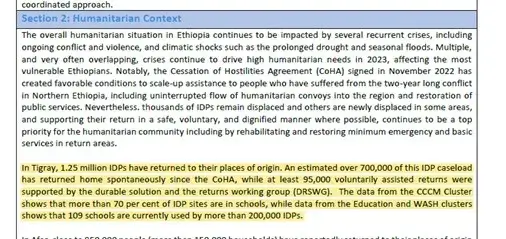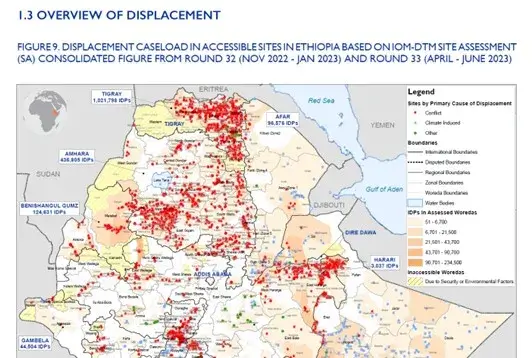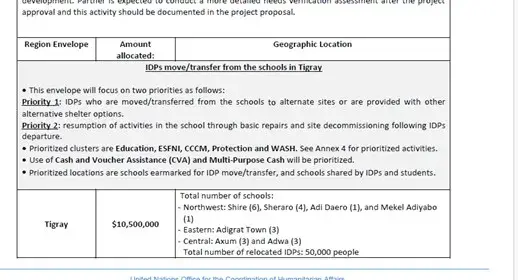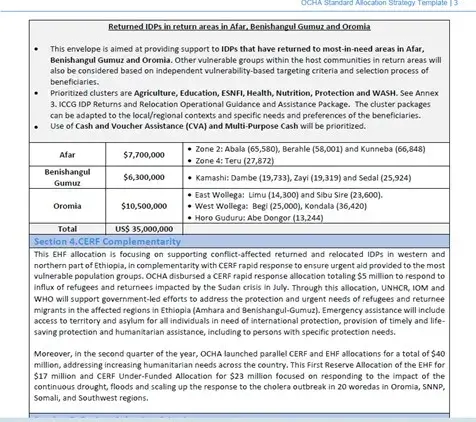The Ethiopian National Defense Forces are carting away young people, mostly men, from Lalibela—they’re suspected of backing Fano.
They’re arresting merchants in the town—suspected of financially helping Fano.
One of the holiest places in Ethiopia is now a de facto occupied town, and the occupiers are the soldiers who are supposed to protect them.
There’s no transportation of goods, so commerce is at a virtual standstill, and nobody is allowed to leave. To go to the market for shopping is an empty gesture. “The people are afraid that the ENDF soldiers will cause problems to the churches,” says one source. They presume that the soldiers throwing their weight around town are the same kind that bullied Orthodox Christians in Addis Ababa and other locales.
“Even yesterday, they take more and more young people away,” says the source. But nobody knows where exactly the arrested individuals are taken… or if they’re still alive.
None of this, however, seems to merit the attention of the International Commission of Human Rights Experts on Ethiopia for its latest report and news conference. Reading out their conclusions in monotone, the three experts paid passing lip service to “reports of violations against civilians in the Amhara region,” but devoted much of their time at today’s news conference to Tigray. Right from the start you could tell the game was rigged by the experts referring to Welkait as “Western Tigray.”
The report itself is a bad joke. While devoting the equivalent of two whole pages to Tigray, it gives only four brief paragraphs to “serious violations” perpetrated against Amhara for its time frame.
The Afar get even less in this report, with only two paragraphs, and their descriptions are lumped together with the section for Amhara.
Predictably, the report makes ENDF, EDF, Fano, Amhara Special Forces and even Afar Special Forces the villains for “human rights violations” in its Legal Findings but doesn’t even name the TPLF when it states that “Tigrayan and allied fighters… committed war crimes in Amhara region between July and December 2021 and in Afar Region between November 2021 and March 2022. The Commission finds these to be the war crimes of violence to life and person; outrages upon personal dignity; intentionally directing attacks against the civilian population; pillage; rape; sexual slavery; and sexual violence.”
It merely goes back in the next paragraph to repeating accusations against Ethiopian, Amhara, and Afar forces.
What a sham.
And it gets worse. A source shared with me today an internal document from the Ethiopia Humanitarian Fund, which is part of the UN’s OCHA. For an allocation amount of $35 million U.S., with an “allocation launch date” of September 11 and a submission date of October 1, the Amhara simply do not exist. More on this in a moment, but first we need to look at some numbers—
Under its section for Humanitarian Context, the document chirps optimistically, “Notably, the Cessation of Hostilities Agreement (CoHA) signed in November 2022 has created favorable conditions to scale-up assistance to people who have suffered from the two-year long conflict in Northern Ethiopia, including uninterrupted flow of humanitarian convoys into the region and restoration of public services.”
The document claims that in Tigray, 1.25 million IDPs have returned to their places of origin. An estimated over 700,000 of this IDP caseload has returned home spontaneously since the CoHA,” with “at least 95,000 voluntarily assisted returns…”

Here’s a dumb question: the document says more than a million people have gone home to Tigray —and this number lines up with the UN’s figure for IDPs in its public Ethiopia National Displacement Report 16 for November 2022 to June 2023. Note the number of IDPs on its own map (see below). So…

If, as Mohamed Chande Othman claimed today, “Eritrean troops, Amhara Special Forces and militia members continue to commit grave violations in Tigray, including rape and sexual violence of women and girls [sic],” WHY would more than a million people go home to Tigray?
Do tell. Please explain. We’re all ears.
But back to the allocation document: It rattles off figures for IDPs returning home to Afar woredas, parts of Oromia and Benishangul Gumuz, with no context for just who (ethnically) is moving around. And then there’s this:
“Due to the recent situation in Amhara, a separate reserve allocation to respond to the Amhara crisis will be launched in September.”
Really? Where’s the document on that?
What research went into that and why is it not worth putting into this report?
In fact, why is the situation being referred to as “recent” when the document itself refers to the “OCHA’s recent assessment mission from August 2023,” which means that if you had people on the ground checking different regions of the country, you could have researched Amhara as well.
There is no damn excuse because as various advocates and diaspora groups can tell you while they roll out their own research, attacks and ethnic cleansing incidents in Amhara go back to even before the Tigray conflict, continued through the war, and the open hostilities between ENDF and Fano began before the ink was dry on the Pretoria Agreement. Federal soldiers began hunting for young Fano defenders in Lalibela then, and we have witnesses to prove it.
And the breakdown for who will get money and how much sure is interesting. Notice that Tigray and Oromia turn out to be exactly tied for allocated funds. Gosh, that math worked out nicely, didn’t it? But take a closer look at the right-hand columns.


Notice that there’s no individual breakdown for numbers at schools in Tigray—just a total number of relocated IDPs of “50,000 people”—yet presumably, these numbers for zones in Afar are for returned IDPs in “most-in-need areas” and add up to a rough total of about 219,000 people. Assuming these are also returned IDP figures in locations for Oromia, that region will get more money than Afar yet the figures barely approach half that for Afar in terms of its total.
So why should Oromia rate more funds?
And again, why is one of the most hard-hit areas of the country, one that was clearly suffering during the period that UN researchers were “recently” poking about, left out of this plan?
If I’m misreading these numbers provided, I’m happy to acknowledge it, but even if you ignore the right-hand column figures altogether, there is no specific criteria given for why Tigray and Oromia should get the lion’s share of funds, why the others get less, and why Amhara was ignored as if it never suffered at all during the war.
The document tells us, “Recognizing differentiation of contexts even within individual crises, this allocation is organized and targeted geographically. The prioritized zones and woredas are based on consultation with national and regional counterparts and recent available data. Considering various sectoral needs do not exist in isolation from each other, the area-based approach allows diverse needs to interact and to align accordingly within the prioritized assistance.”
That is some mighty fine gobbledygook that tells you absolutely nothing. And was likely written with that intent.
What this document says… what the news conference of earlier today told us… is that when it comes down to it, the UN really doesn’t give a damn about your lives if you’re Amhara.
I recognize at least one name and email address on this document from previous stories. Clearly no one at the UN wanted to ask any hard questions about their conduct from about two years ago, and the person still has a job.
So we should ask as well: Why is there no accountability at all for what the UN is doing in Ethiopia?
No wonder that Amhara pleas for justice fall on deaf ears with the organization. It can’t even tell the complete stories for Amhara victims in its human rights reports or acknowledge them as IDPs in a funding document.
This is why people support Fano. So that Ethiopians can write their own story.

















Pretty sad.This country long lost its baricenter — assuming it ever had one.